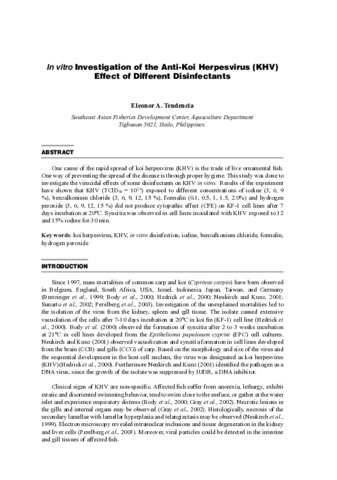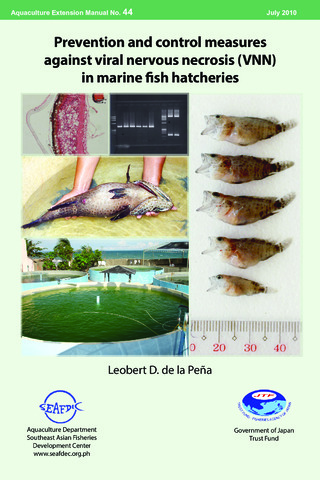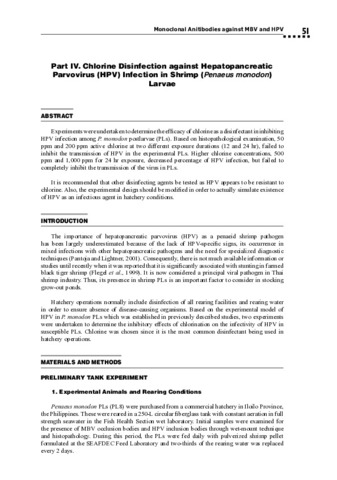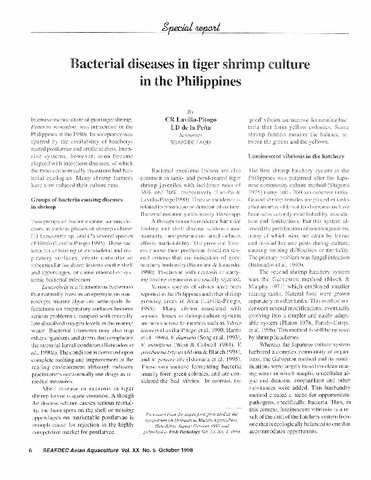In vitro investigation of the anti-koi herpesvirus (KHV) effect of different disinfectants
- Global styles
- MLA
- Vancouver
- Elsevier - Harvard
- APA
- Help
Share
Abstract
One cause of the rapid spread of koi herpesvirus (KHV) is the trade of live ornamental fish. One way of preventing the spread of the disease is through proper hygiene. This study was done to investigate the virucidal effects of some disinfectants on KHV in vitro. Results of the experiment have shown that KHV (TCID50 = 107.5) exposed to different concentrations of iodine (3, 6, 9 %), benzalkonium chloride (3, 6, 9, 12, 15 %), formalin (0.1, 0.5, 1, 1.5, 2.0%) and hydrogen peroxide (3, 6, 9, 12, 15 %) did not produce cytopathic effect (CPE) on KF-1 cell lines after 7 days incubation at 20°C. Syncitia was observed in cell lines inoculated with KHV exposed to 12 and 15% iodine for 30 min.
Suggested Citation
Tendencia, E. A. (2005). In vitro investigation of the anti-koi herpesvirus (KHV) effect of different disinfectants. In K. Nagasawa (Ed.), Recent Advances in Diagnosis and Prevention of Fish and Shrimp Diseases in Southeast Asia (pp. 389–393). Tigbauan, Iloilo, Philippines: Aquaculture Department, Southeast Asian Fisheries Development Center.
Type
Book chapterISBN
9718511732
Related items
Showing items related by title, author, creator and subject.
-
Series: Aquaculture extension manual; No. 44
Prevention and control measures against viral nervous necrosis (VNN) in marine fish hatcheries
de la Peña, Leobert D. (Aquaculture Department, Southeast Asian Fisheries Development Center, 2010)An extension manual that describes the clinical signs, behavioral changes, geographical distribution, and species affected by the virus; detection, prevention and control methods especially in the hatchery phase are also included. -
Chlorine disinfection against hepatopancreatic parvovirus (HPV) infection in shrimp (Penaeus monodon) larvae
Catap, Elena S.; de la Peña, Leobert D. (Aquaculture Department, Southeast Asian Fisheries Development Center, 2005-03)Experiments were undertaken to determine the efficacy of chlorine as a disinfectant in inhibiting HPV infection among P. monodon postlarvae (PLs). Based on histopathological examination, 50 ppm and 200 ppm active chlorine ... -
Bacterial diseases in tiger shrimp culture in the Philippines
Lavilla-Pitogo, Celia R.; de la Peña, Leobert D. (Aquaculture Department, Southeast Asian Fisheries Development Center, 1998)


 AQD Access
AQD Access




